Data Collections
What is a Data Collection
A Data Collection refers to an organized set of data that is gathered, stored, and managed in a structured way. It involves grouping related pieces of information into a specific format or category for easy retrieval, analysis, and processing. Data Collections can consist of various types of data, such as text, numbers, or multimedia, and are often used in databases, spreadsheets, or data management platforms. The purpose of a Data Collection is to provide a centralized and efficient way to store and manage data, making it easier to access and manipulate for various business or analytical purposes. Data Collections are essential for maintaining data integrity, ensuring data consistency, and improving data access and scalability.
You can organize and structure your data for efficient storage, retrieval and management. They allow you to store structured datasets, making it easy to access, modify, and distribute information as needed. The data is stored as JSON but can be transformed via Formattings to XML or CSV.
You can use Data Collections for:
-
Personalization
Data Collections help personalize customer experiences by tracking their preferences, browsing history, purchase behavior, and search patterns. This allows to recommend products tailored to individual preferences.
-
Customer Segmentation
By collecting and analyzing customer data (demographics, purchase behavior, engagement), businesses can segment customers into groups, enabling targeted marketing and improved customer satisfaction.
-
Inventory Management
Data Collections can track stock levels, sales trends, and product performance. This helps in managing inventory efficiently, preventing overstock or stockouts, and optimizing supply chains.
-
Pricing Strategy
Collecting competitive pricing data and consumer behavior helps businesses set optimal pricing, offer discounts, or adjust prices dynamically based on market conditions and demand.
-
Sales Analytics and Reporting
Data Collections from sales transactions, customer behavior, and marketing campaigns can be used to generate reports, analyze trends, and assess performance, helping businesses make data-driven decisions.
-
Customer Support and Satisfaction
Tracking customer interactions, feedback, and complaints allows businesses to improve customer service, identify pain points, and measure satisfaction.
-
Marketing Optimization
Data on customer interactions with ads, email campaigns, social media, etc., can be used to optimize marketing strategies, improve targeting, and increase ROI.
-
Fraud Detection and Prevention
By collecting data on purchasing patterns, location, and payment methods, you can identify unusual activity and prevent fraudulent transactions.
-
Predictive Analytics
By collecting historical data on customer behavior, inventory, and trends, e-commerce businesses can predict future demand, optimize stocking, and tailor marketing efforts.
Navigation to the Data Collections page
To get to the Data Collection page from the dashboard, find the Data Hub Tile and select Data Collections.
If the tile shown is deactivated, you do not yet have a Data Hub license. In this case, please contact sawsconnector@saws.de.
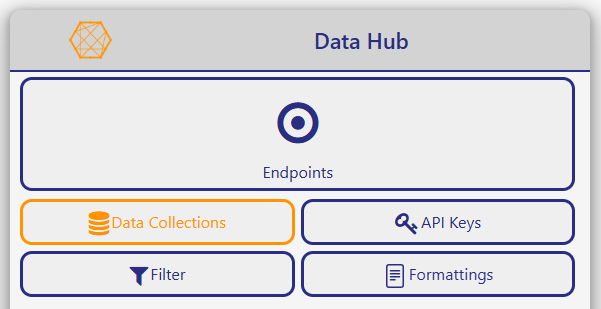
If you are not on the dashboard click the most left button in the toolbar to navigate to the dashboard page.

If you are already in the Data Hub you can use the dropdown menu in the toolbar and select the Data Collections item.
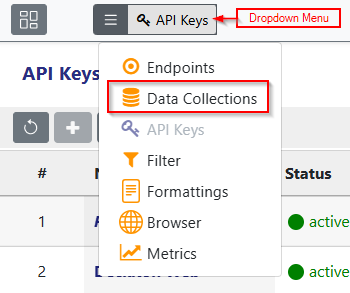
Now you should be in the Data Collections page which shows the Data Collections table list.
Creating a Data Collection
To create a new Data Collection, click on the Plus Button on the top left corner of the Data Collections table.
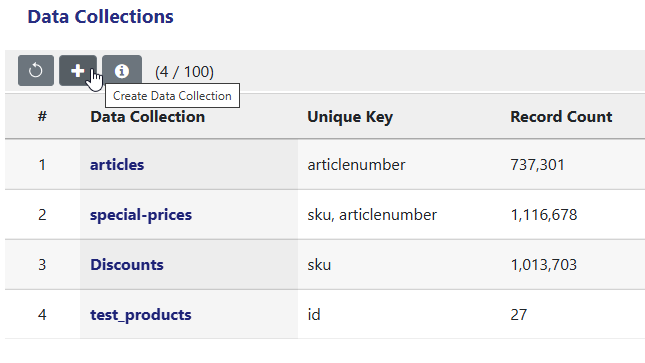
The Editor will open where you can configure the metadata of your Data Collection which consists of the following:
- Name
- Unique Key
- Direct Access
Name
The name of the Data Collection must be case insensitive unique as it serves as an identifier. Only letters, numbers, hyphens and underscores are allowed.

Unique Key
The unique keys are the keys which uniquely identify a record within the Data Collection. These keys are used to find and update the record during an update. If the record is not found via these keys, a new record is created. An import of a record which misses one of the unique keys will result in an error. You must have at least one Unique Key.

This is an example on how a record should and should not be defined with the Unique Keys “id” and “sku”:
{
"id": 5,
"sku": "36f2b55b263cbb7eb847b3d580b980ef",
"locale": "de",
"specialPrice": null
}
👍In this record all Unique Keys are given.
{
"id": 5,
"articlenumber": "5034",
"locale": "en"
}
👎This record is missing the Unique Key “sku”.
If you change the Unique Key after you populated the Data Collection it will be emptied.
Direct Access
The Direct Access lets you select multiple API Keys. These API Keys have direct read access to your Data Collection.

If you do not have any API Keys yet you can come back later and reconfigure the Direct Access at any time.
Directly beneath the Direct Access you can see a URL. With this URL you can directly fetch the Data Collection with the selected API Keys.
![]()
Preview Configuration
If you have Media save for your Data Collection, you can configure a Preview which is shown at the top when a single record is displayed.
Text
In the Text Field you can select multiple Attributes for the Title and the Description which can be a point separated path. The Preview will display the first path that leads to a primitive which is not an empty string. If only a part of the path leads to a valid value it will be displayed.
Consider the following data structure for a record:
{
"details": {
"name": "Product X",
"description": "Lorem Ipsum"
},
"desc": "Special Price",
"price": 199
}
And this configuration:

The title will be “Product X” because “details.title” does not exist and “details.name” is already a valid value.
The description will be “Special Price” because even though both paths are valid, “desc” is defined first.
Images
Every Media is linked to an Asset Type and can have multiple Variants. In the configuration you can select multiple Asset Types and Variants which should be shown at the top in an image carousel.
The carousel will only display images, like png, svg or jpg, which have a size smaller than 500kb.

In this example, the carousel considers all images with the Asset Type “images” and “otherimages” of the Variant “thumbnail” or “watermark” which are under 500kb.
Save
Now you should be able to save your Data Collection. It should look like this:
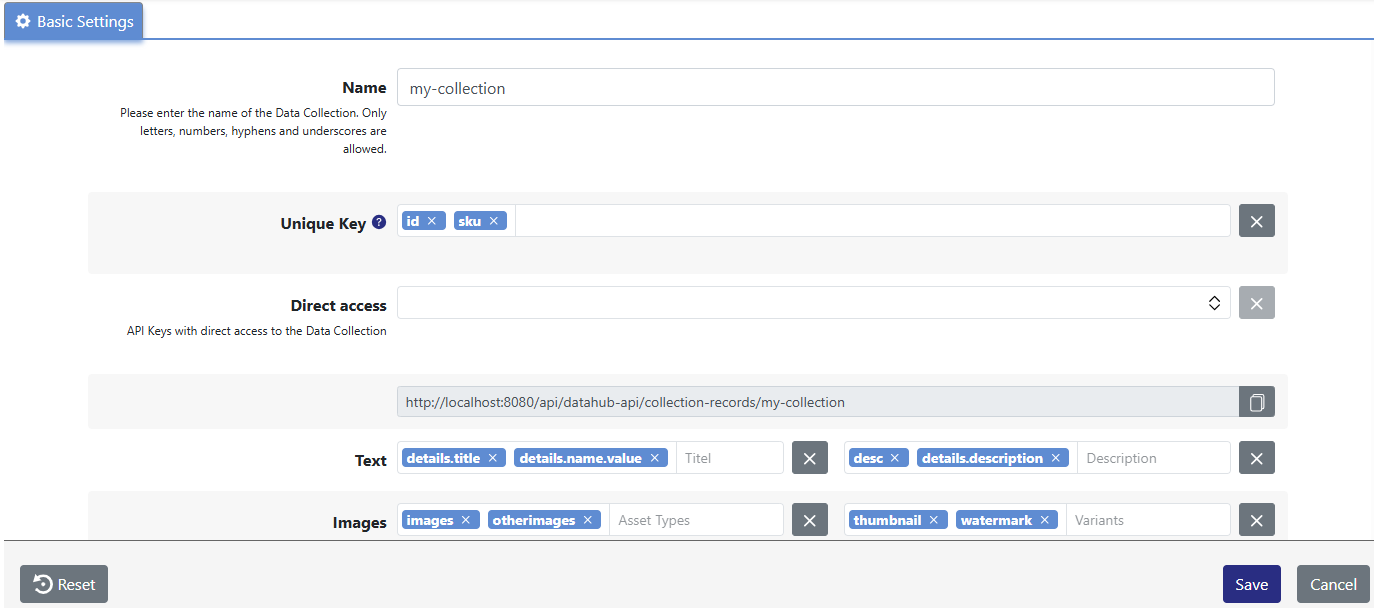
Further Informative Fields
After the save was successful the Data Collection contains a few more automated fields:
- Number of Records
- Created
- Last Record Fetch
- Last Record Change
- Sync Status
Number of Records
This field displays the total number of records in your Data Collection. With the refresh button you can reload the metadata of the Data Collection.
![]()
Created
The Created field shows you the date when the Data Collection was created. If you have just created a Data Collection it should show you the current date.
![]()
Last Record Fetch
The Last Record Fetch field shows you the date of your last fetch. If you have just created your Data Collection this field should be empty.
Last Record Change
The Last Record Change field shows you the date of your last record change. If you have just created your Data Collection this field should be empty.
Sync Status
The synchronization of your Data Collection can take a little bit of time depending how busy the servers are.
For more information read the Sync Status article.
Tabs
After you created your Data Collection there will be additional Tabs which will help you identifying dependencies and references.
Endpoints
The Endpoints tab shows a list of Endpoints which reference this Data Collection.
Records
The Records tab shows a list of Record Formattings which reference this Data Collection in a Formatting Reference.
Browser
In the Browser tab you can request your Data Collection with additional queries like start, limit or filter.
Filling a Data Collection
You can populate a Data Collection either with the DynamicJSON Connector or with a Import Endpoint.
Retrieving a Data Collection in Owl
Either use the Browser tab in the Data Collection editor or use an Export Endpoint.
Retrieving a Data Collection in a Program
To get the URL of the direct access of your Data Collection go to the Data Collections editor and copy the URL beneath the Direct Access field.

Headers
In the headers you have to provide an API Key as Authorization.
You have to use the API Key of one of the defined API Keys in the Direct Access Field in the Data Collection.
You can get the API Key from the API Key editor in the API Key field. The status of the selected API Key must be active.
The content type is always application/json.
{
"Authorization": "<api-key>",
"Content-Type": "application/json"
}
Body
The body represents the query of your request where you can send a stringified object with a filter object, a changes object and a limit string.
{
"filter": {},
"changes": {},
"limit": "0,10"
}
The filter and changes object are the same as explained in the Browser article. The limit are two numbers which are comma separated. The first number is the offset which is the index it starts accumulating the response. This value is equivalent to the “start” value of the Browser. The second number is the maximum number of records it should respond with. This is equivalent to the “limit” value of the Browser.
In JavaScript a fetch would look like this:
fetch(
'https://api.saws.de/datahub-api/sawsdeveloper/collection-records/my-collection',
{
method: 'POST',
headers: {
Authorization: '<api-key>',
'Content-Type': 'application/json'
},
body: JSON.stringify({ limit: '0,1' })
}
)Response
The response will have always the following structure.
{
count: number,
"<data-collection-name>": Array<Record>
}
Example of my-collection:
{
"count": 3,
"my-collection": [
{
"id": 3,
"sku": "sku-3",
"lang": "fr"
},
{
"id": 1,
"sku": "sku-1",
"lang": "de"
},
{
"id": 2,
"sku": "sku-2",
"lang": "en"
}
]
}
Direct Access with Unique Key
Directly accessing a Data Collection with one or more Unique Keys only works for Unique Keys of type string.
So for the example of my-collectionwe have to convert every id to a string:
[
{
"id": "3",
"sku": "sku-3",
"lang": "fr"
},
{
"id": "1",
"sku": "sku-1",
"lang": "de"
},
{
"id": "2",
"sku": "sku-2",
"lang": "en"
}
]
You can get a subset of records or directly a record using the Unique Keys in the URL with a GET request. (you still need Authorization)
Append the Data Collection URL with one or more Unique keys like <URL>/<unique-key-1>/<unique-key-2>/etc.
The Unique Keys have to be in the same order you defined it in the Data Collection.

So for my-collection: <URL>/id/sku
Retrieving a subset of data is only possible if the Unique Key consists of more than one field.
Just omit Unique Keys from the end of the URL to get all records which match the remaining Unique Keys.
For my-collection <URL>/1 will return every record with the id “1”.
You can not get a subset of data using only the sku Unique Key because it is in the second position. For that use a POSTfilter instead like mentioned before.
To get a single record use every Unique Key in the order it is defined in the Data Collection.
The response will be the record directly.
For my-collection <URL>/1/sku-1 will result in the following response:
{
"id": "1",
"sku": "sku-1",
"lang": "de"
}
